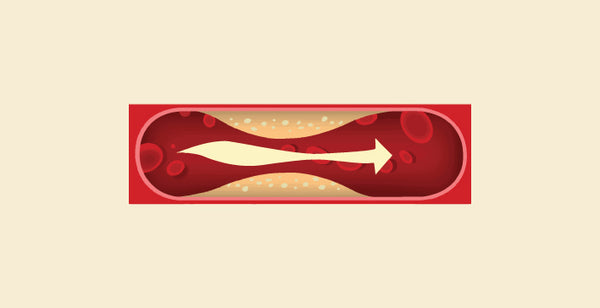Stable Angina vs Myocardial Infarction: Stable Angina and Myocardial Infarction (MI) are both cardiovascular conditions, but they differ significantly in their nature, presentation, and management. Because there is less blood supply to the heart muscle, stable angina is characterized by chest pain or discomfort that is usually brought on by physical activity or mental stress. Usually, the discomfort is predictable, passes quickly, and may be managed with rest or medicine. MI, on the other hand, is an acute occurrence that results in tissue damage and cell death due to an abrupt and total stoppage of blood flow to a section of the heart muscle. It usually begins with an abrupt, intense chest pain that lasts for more than 20 minutes. Sweating, nausea, and dyspnea are common side effects.
Difference between Stable Angina and Myocardial Infarction
A Myocardial Infarction presents as rapid, severe damage to the heart tissue that requires immediate medical attention, whereas Stable Angina is characterized by predicted chest pain from diminished blood flow. The table below provides the differences between Stable Angina and Myocardial Infarction.
|
Feature |
Stable Angina |
Myocardial Infarction (MI) |
|
Definition |
Chest pain or discomfort due to reduced blood flow to the heart muscle, typically triggered by exertion or stress |
Acute event resulting from a sudden, complete blockage of blood flow to a portion of the heart muscle, leading to tissue damage and cell death |
|
Onset |
Predictable, often with exertion or emotional stress |
Sudden onset, not predictable, can occur at rest or with exertion |
|
Duration |
Resolves with rest or medication within minutes |
May persist for more than 20 minutes, often severe and prolonged |
|
Character of Pain |
Pressure, squeezing, or tightness in the chest, may radiate to the arms, neck, jaw, or back |
Crushing, squeezing, or stabbing pain in the chest, accompanied by sweating, nausea, and shortness of breath |
|
ECG Changes |
Typically normal during pain episodes, or may show transient ST-segment depression or T-wave inversion |
Often shows ST-segment elevation or depression, T-wave changes, or Q waves indicative of myocardial injury |
|
Biomarkers |
Normal cardiac biomarkers (e.g., troponin, CK-MB) |
Elevated cardiac biomarkers (e.g., troponin, CK-MB) indicative of myocardial damage or necrosis |
|
Management |
Relieved by rest and/or sublingual nitroglycerin, may require medications for long-term management (e.g., beta-blockers, calcium channel blockers, nitrates) |
Immediate reperfusion therapy (e.g., thrombolytics, percutaneous coronary intervention) to restore blood flow, followed by medications to reduce myocardial oxygen demand and prevent complications |
|
Prognosis |
Generally favorable with appropriate management, may progress to unstable angina or MI |
Variable depending on the extent of myocardial damage and promptness of treatment, with potential for significant morbidity and mortality |
Browse The Best Scrubs Collection!
What is Stable Angina?
Stable Angina is a cardiovascular condition characterized by chest pain or discomfort caused by temporary restriction of blood flow to the heart muscle. When the heart needs more oxygen, which usually happens during physical exercise or mental stress, it happens. The chest pain, which can also radiate to the arms, neck, jaw, or back, is frequently characterized as feeling tight, pressured, or squeezing.
Causes of Stable Angina
- Atherosclerosis: This is the main cause of Coronary Artery Disease (CAD). It is caused by plaque accumulation inside the arteries, which narrows or obstructs them. This causes the heart muscle's blood supply to be restricted, which causes angina symptoms.
- Age and Gender: Men are often more at risk than women who are not yet menopausal, and the risk of CAD rises with age. But during menopause, women's risk rises and may eventually catch up to men's.
- Family History: People are more likely to acquire stable angina if they have a family history of CAD or early-onset heart disease. Atherosclerosis may occur as a result of genetic causes.
- Physical Inactivity: A diet deficient in exercise regularly may be a factor in the development of CAD. Frequent exercise promotes overall cardiovascular health, decreases blood pressure, raises cholesterol, and helps people maintain a healthy weight.
- Stress: Long-term stress can lead to coronary artery disease (CAD) through several pathways, such as elevated blood pressure, unhealthy coping strategies like smoking or binge eating, and the release of stress hormones that can be harmful to the cardiovascular system.
- Other Medical Conditions: Several illnesses can raise the risk of CAD and stable angina, including hyperhomocysteinemia, inflammatory diseases including rheumatoid arthritis, and chronic renal disease.
Symptoms of Stable Angina
- Chest Discomfort: A sensation of pressure, tightness, squeezing, or heaviness in the chest is the most typical sign of stable angina. Another way to characterize this sensation is as aching, burning, or fullness. In addition to the neck, arms, shoulders, jaw, and back, it can also happen beneath the breastbone (sternum).
- Pain Radiating to the Arms or Shoulders: Stable angina can cause chest pain that travels to the left or right arm, shoulders, or neck. This radiation pattern is frequently reliable and could provide important diagnostic information.
- Breathlessness: Shortness of breath is a common symptom of stable angina in many people, particularly during physical activity or exertion. This symptom arises from the heart's inability to pump enough blood that is rich in oxygen to fulfill the body's increased need during physical activity.
- Fatigue: If the heart is not getting enough blood flow because of constricted or blocked coronary arteries, then persistent weakness or weariness may accompany stable angina.
- Dizziness or Lightheadedness: Stable angina may occasionally result in symptoms of lightheadedness or dizziness.
What is Myocardial Infarction?
Myocardial Infarction, often known as a heart attack, happens when blood supply to a part of the heart muscle is suddenly blocked, causing tissue damage or death. This is a significant medical emergency that needs to be treated right away in order to lower the chance of death and stop other complications.The coronary arteries carry oxygen-rich blood to the heart muscle, and the obstruction usually results from the rupture of a plaque within one of the arteries.
Causes of Myocardial Infarction
- Atherosclerosis: The accumulation of plaque (atherosclerosis) in the coronary arteries, which provide blood to the heart muscle, is the most frequent cause of myocardial infarction. The components of this plaque are fibrin (a clotting ingredient), calcium, cellular waste materials, cholesterol, and fatty compounds. Plaque can cause the arteries to thin or become blocked over time, which lowers the heart's blood flow.
- Coronary Artery Spasm: The coronary arteries may constrict and momentarily lower blood flow to the heart muscle in certain situations. These spasms can occur suddenly. Myocardial infarction may result from this, particularly if the spasm happens in a coronary artery that has already been constricted by atherosclerosis.
- Blood Clot: A blood clot can develop on the coronary artery's plaque surface, further restricting or stopping the artery. A heart attack may result from this disruption of blood flow to the heart muscle.
- Coronary Artery Embolism: Occasionally a blood clot may come loose from one area of the body and pass through the bloodstream, getting trapped in a coronary artery and obstructing blood flow and triggering a heart attack.
Symptoms of Myocardial Infarction
- Pain or Discomfort in the Chest: This is the most typical sign of a heart attack. One may experience pressure, tightness, squeezing, or heaviness in the chest when experiencing pain or discomfort. Another way to describe it is as a burning, hurting, or stabbing sensation. The neck, chin, shoulders, arms (particularly the left arm), back, or abdomen may all experience radiating pain.
- Breathlessness: Breathing difficulties or being out of breath can happen with or without chest pain. It could start off slowly and build up over time.
- Sweating: Profuse sweating, often accompanied by cold, clammy skin, can occur during a heart attack.
- Dizziness or Lightheadedness: Reduced blood supply to the brain might cause feelings of faintness, dizziness, or lightheadedness.
- Fatigue: Abnormal weakness or weariness can manifest with or without additional symptoms, and it is frequently more severe than ordinary exhaustion.
- Vomiting or Nausea: During a heart attack, some people may experience these symptoms, frequently in addition to other ones.
Shop Best Lab Coats From Here!
Similarities between Stable Angina and Myocardial Infarction
- Underlying Cause: Atherosclerosis, a disorder in which plaque accumulates in the arteries, narrows them and lowers blood flow to the heart muscle, can be the cause of both Stable Angina and Myocardial Infarction.
- Symptoms: Chest pain or discomfort can be a sign of both Myocardial Infarction and Stable Angina, albeit the intensity and duration of symptoms vary. The arms, neck, jaw, or back may also become uncomfortable as a result of this.
- Risk Factors: There is a substantial overlap in the risk factors for the two disorders. High blood pressure, high cholesterol, diabetes, obesity, smoking, a sedentary lifestyle, and a family history of cardiovascular disease are a few of these.
- Diagnosis: Stable Angina and Myocardial Infarction can both be identified with diagnostic procedures such as coronary angiography, stress testing, and electrocardiogram/ECG/EKG. Furthermore, measuring blood troponin levels or other cardiac biomarkers may be necessary for both disorders.
- Treatment: Although there are many different approaches to treating both Stable Angina and Myocardial Infarction, common interventions include dietary and exercise modifications, antiplatelet, beta-blocker, and statin medications, and, in certain situations, invasive procedures like coronary artery bypass grafting (CABG) or angioplasty.
In conclusion, Myocardial Infarction is characterized by an abrupt blockage of a coronary artery that results in more severe and potentially fatal symptoms that call for immediate medical attention. In contrast, Stable Angina is characterized by predictable chest pain or discomfort that occurs during physical exertion and usually resolves with rest or medication.
Order the Best Jogger Scrub From Here!
| Check out More Articles | |
| Difference Between Cartilage and Bone | |
| Difference Between Endocrine and Exocrine Glands | |
| Difference Between Cell Wall and Cell Membrane | |















